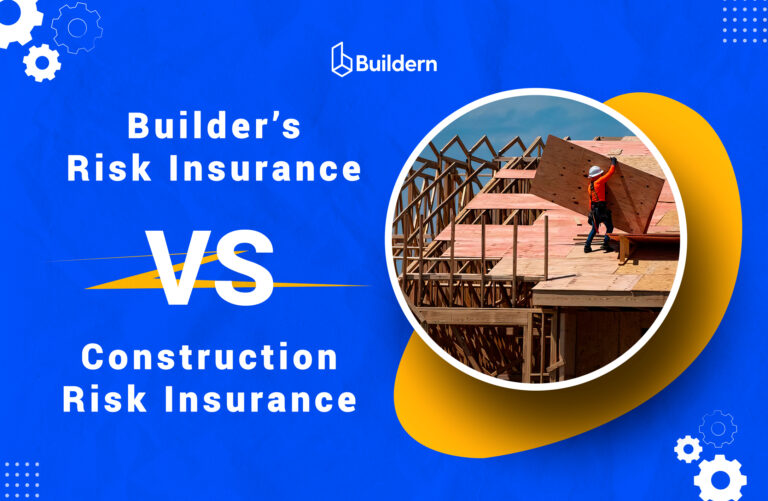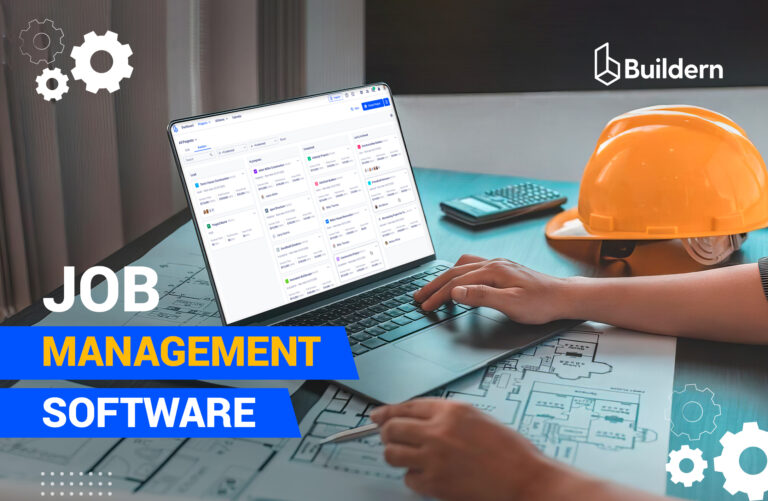Detailed Construction Project Cost Breakdown [Examples Included]
![Detailed Construction Project Cost Breakdown [Examples Included]](https://buildern.com/resources/wp-content/uploads/2024/09/BLOG_Cover_Construction-project-cost-breakdown-2-copy-768x501.webp)
Unexpected cost overruns and delays are the last things we expect when it comes to a construction project cost breakdown.
An unsettling nationwide trend shows construction projects often exceed their budget by at least 16%, thus highlighting the importance of detailed planning and estimation.
To help you avoid such unwelcome surprises, we have put together a comprehensive guide to construction cost breakdown, complete with examples and essential management tips.
Table of Contents
- Main Cost Groups in Construction Projects
- Typical Residential Construction Cost Breakdown
- Typical Commercial Construction Cost Breakdown
- Example of a Construction Project Cost Breakdown
- Factors Affecting Your Construction Project Cost Breakdown
- Tips for Managing and Reducing Construction Costs
- Key Takeaways

Main Cost Groups in Construction Projects
Breaking down all your construction costs into categories means creating a comprehensive list of every single expense involved in your project.
Your work involves a huge number of tasks and materials, making it vital to categorize costs effectively. These costs can typically be divided into several categories, each contributing to the overall budget.
Labor Costs (~20-40%)
Include all payments made to the workforce here. Allocate your team’s salaries and wages, benefits, and insurance payments here.
In this regard, it is important how subcontractors get paid. Effective management of labor ensures your workers are adequately paid for their work and contribute to the timely completion of your project.
Material Costs (~30-40%)
Materials are the backbone of any construction project, ranging from steel and concrete to wood and glass. The choice and quality of materials significantly impact the project’s cost and timeline.
Depending on your working style and your client’s preferences, you can allocate a different percentage of construction costs to source materials.
Equipment Costs (~5-10%)
Last but not least, equipment costs can include expenses related to renting or purchasing machinery.
These can range from small tools to large machinery like cranes. Proper maintenance and efficient scheduling of equipment usage can help you significantly minimize these costs.
Additional Costs
Construction project management is a complex of tasks that requires a unique approach depending on certain criteria. Apart from labor, materials, and equipment costs, there can be other expenses that may not fit into any specific category.
Here are some:
- Overhead costs (~5-15%) include any additional costs that may not be invoiced for a certain project but are essential for running a construction business. This can include office rent, utility bills, marketing expenses, etc.
- Contingency costs (~5-10%) are unexpected costs that may arise during the project’s duration due to unforeseen circumstances. It is vital to have a contingency plan to avoid delays or budget overruns.
- Legal costs (~2-5%) include expenses related to legal procedures, including construction permits, fees, licenses, insurance, and compliance with building codes and regulations.
Typical Residential Construction Cost Breakdown
Residential projects can vary widely in terms of scope and complexity. Whether it’s a single or multiple-story house, the cost breakdown greatly depends on your client’s expectations and the project’s overall budget.
With projects where the details seem overwhelming, ensuring that every cost is accounted for can become exceedingly complex. To manage the data and address any unforeseen issues, you will need construction project management and estimating software that will guide you through every step of the residential construction cost breakdown.
Let’s further go through some of those core steps.
Start with Site Examination and Takeoff
First and foremost, you should start with the topography and conditions of a site. Work with your engineers, architects, and designers familiar with the locality to pin out any potential roadblocks and ensure that the design meets zoning regulations.
Moving on to the digital side of the work, use your construction estimating software to predict (with maximum precision) the number of materials needed for the job.

Upload your construction takeoff plans to Buildern and start working with all the essential measurements like the counts, lengths, areas, and volumes. Such a digitized approach to the work will help you lay the groundwork for cost-effective budgeting.
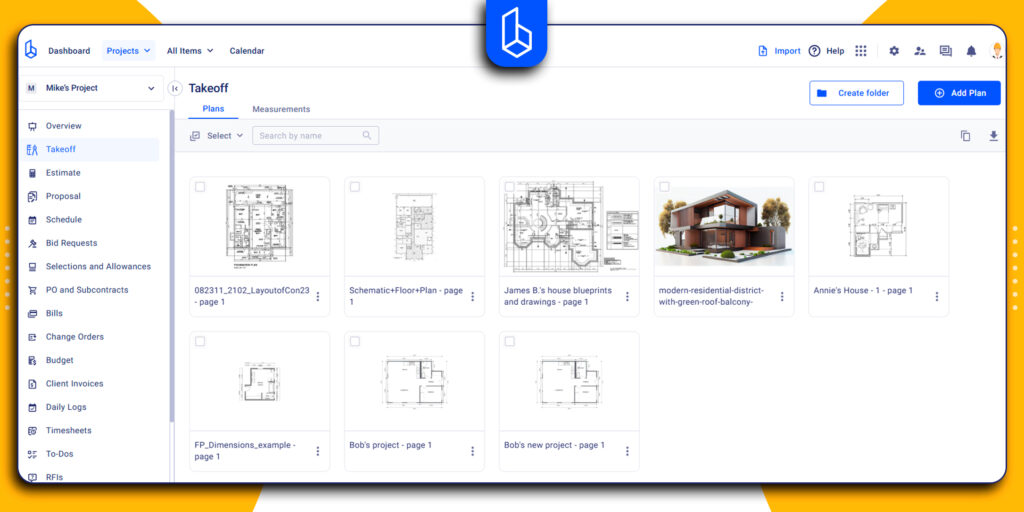
While it takes time and effort to accurately determine every single material needed, it ensures you have a solid baseline for costs.
Estimate Material, Labor, and Equipment Costs
Construction budgeting requires you to consider every aspect of the project, from materials and labor to equipment and your collaboration with subcontractors and vendors.
Construction estimating software can help you eliminate human error if you keep all the cost catalogs and price lists in a single database. This will also help you develop a synchronized construction cost code system.
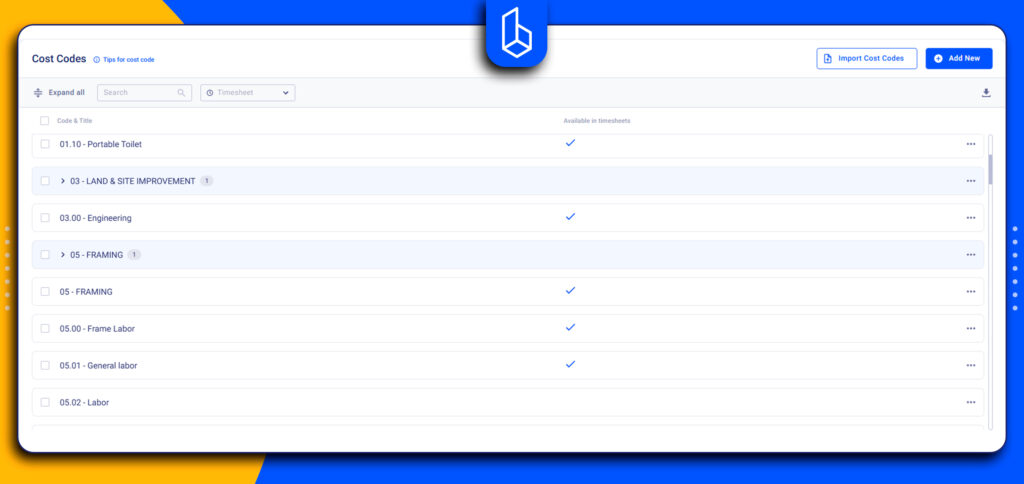
Use either standardized CSI and NAHB home builder cost codes or allocate time to create your unique hierarchical database with Buildern. Simply break down the codes into key categories, like:
- Labor
- Materials
- Overhead costs
By categorizing expenses in this way, you can gain a clearer understanding of where funds are being allocated and optimize the project’s financial planning.
As a construction management software user, you also have the flexibility to import your cost code data from Excel or CSV spreadsheets.
Develop Your Project’s Timeline
Gantt charts with detailed project planning can help you identify potential issues, see the critical paths, and create corresponding dependencies to ensure everything and everyone is on track with project implementation.
When every cost has been identified, it’s time to synthesize your budget into a comprehensive timeline.
You will need to coordinate with all the teams involved in the project to understand how long each stage will take. It is also important to plan the amount of resources needed at each milestone.
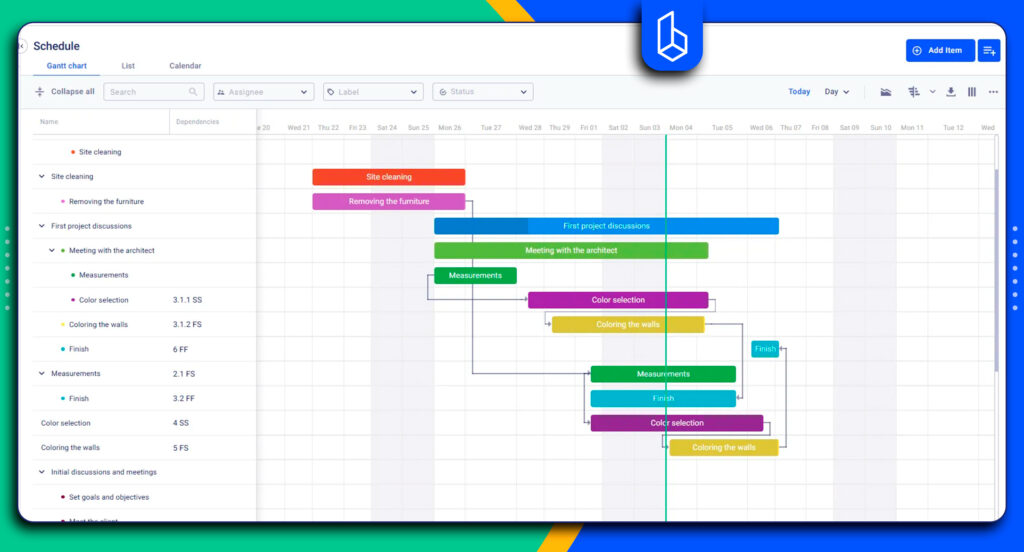
It will help your project managers by clearly displaying task durations, sequences, and overlapping activities. Gantt charts visualize the entire project timeline, making it simpler to monitor the project flow.
Calculate the Labor and Equipment Rates
Now that you have a relatively clear idea about the project’s timeline and materials, you can calculate the labor and equipment rental that will occur during each construction phase.
Some items may have different rates depending on your sub/vendors’ pricing, seasonal rates, and other factors.
💡Pro Tip: You can easily overcome this by having price lists and cost catalogs at hand when creating an estimate.
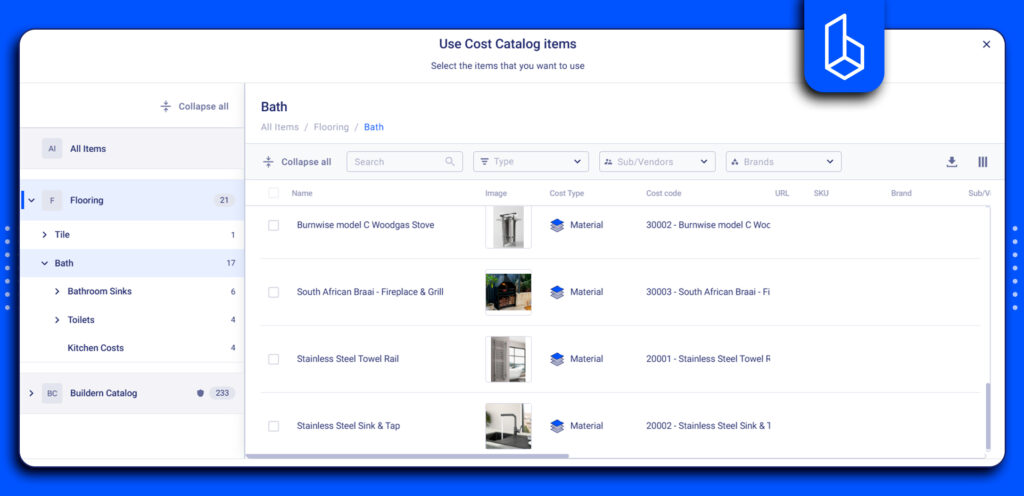
Creating a maximum detailed cost catalog will help you get accurate, consistent cost estimates in the future. The price lists and cost catalogs can be altered on demand to account for changing rates and new materials.
Don’t Forget to Calculate Additional Costs
Contingency, markup, and overheads are three important components to factor into your budget. Inflation, for instance, cannot be predicted, so allocating 5-10% for contingency cases is generally a good idea.
For example, if your project price is $560,000, having over $56,000 for unexpected costs can help you stay within your budget.
Calculating markup and additional costs greatly depends on your company and its financial strategy, but it’s essential to consider these expenses to ensure your income grows.
Typical Commercial Construction Cost Breakdown
Suppose you are building a business center somewhere in the suburbs of Los Angeles. In that case, the commercial construction cost breakdown would include a different and much more detailed approach.
The key steps to project budget estimating can be similar to those of the residential construction cost breakdown, but with more specific categories.
For instance, the operational and compliance costs will include permits, zoning fees, environmental assessments, multiple safety inspections, etc. This is crucial to avoid penalties, so it’s better to estimate these expenses beforehand.
Your main commercial construction cost breakdown categories are:
- Surveying and site preparation
- Foundation and substructure
- Above-ground structure
- Walls and partitions
- Exterior and interior finishings
- HVAC, electrical, and plumbing systems
- Final touches and additional costs
How do you keep everything running smoothly?
The answer is eliminating manual work as much as possible and using construction project management software to coordinate and oversee as many phases as possible.

Example of a Construction Project Cost Breakdown
Everything explained above needs some time and practice to understand and start implementing, as the concepts might initially seem overwhelming.
To help with this, we will continue with a real-life example of a construction cost percentage breakdown.
Suppose you need to estimate a residential project cost breakdown with an initial budget of ~$300,000.
Let’s have a look at the following table illustrating the allocation of costs and their respective percentages for the estimated budget.
| Key Categories | Percentage | Cost (USD) |
|---|---|---|
| Preliminaries | 4.8% | $14,006 |
| Drafting – Working Drawings | 1% | $3,000 |
| Engineering Design | 1.6% | $4,800 |
| Energy Efficiency Report | 0.13% | $400 |
| Building Certification Fee | 0.72% | $2,150 |
| Application fee | 0.34% | $1,032 |
| Contingency Fund | 29.9% | $89,700 |
| Scaffold Hire | 3.33% | $10,000 |
| Earthworks | 0.1% | $180 |
| Removal of Grassy Vegetation | 0.04% | $130 |
| Removal of Vegetation and Trees | 0.72% | $2,150 |
| Wall Frames – Prefabricated | 5.8% | $17,260 |
| Trusses – Premade | 6.2% | $18,610 |
| Crane Hire – Subfloor | 0.1% | $265 |
| Carpentry Labour | 0.2% | $555 |
| Roof, Battens, Facia and Gutter | 12.34% | $37,012 |
| Windows and Doors – Aluminium | 6.1% | $18,281 |
| Flyscreens – Windows | 1.11% | $3,330 |
| Front Door | 0.4% | $1,100 |
| Plumbing | 12.2% | $36,500 |
| Air Conditioning | 3.3% | $9,909 |
| Hebel Cladding and Render | 5.84% | $17,522 |
| Fireplace | 2.7% | $8,000 |
This example doesn’t represent a complete cost breakdown but rather a general overview with some key categories. Each builder may approach the cost allocation process differently, influenced by their work ethics, experience, and the specific requirements of the project at hand.
The breakdown will be different for a commercial project, depending on the type of building and your client’s expectations.
Factors Affecting Your Construction Project Cost Breakdown
Factors like the project’s geographic conditions, inflation, and market rates fluctuate, making it challenging to stick to the budget. Knowing how to mitigate risks and manage expenses is what ensures your company’s success.
For instance, regions experiencing rapid urban development, such as metropolitan areas or tech hubs, naturally result in higher construction materials and labor demand.
In cities like San Francisco or New York, the high demand for steel and concrete drives up costs and keeps builders alert to unforeseen changes.
Another case may be building in remote areas, like mountainous regions or islands, resulting in transportation difficulties and material shortages. This requires additional budget allocation for logistics and, as a result, may increase the total cost of your project.
Tips for Managing and Reducing Construction Costs
Let’s put it in a nutshell.
Implementing an efficient cost breakdown of construction projects doesn’t require rocket science. Instead, consider practicing the following:
- Automate project estimation and management as much as possible. This will greatly help with budget and resource allocation, leaving you time to focus on other important aspects of your project.
- Plan for contingency and allowance budgets. It’s always a good idea to allocate a certain percentage of your budget for unexpected expenses, delays, or changes in the project scope. It’s a way to handle change orders and unforeseen events without causing major disruptions to your project.
- Adopt prefabrication techniques. Prefabricating certain elements of a building can significantly reduce costs and construction time. Try investing in precast concrete panels, structural steel frames, or modular units to speed up your project and reduce labor costs.
- Get it done with a single source of truth. Keep all your construction plans, invoices, and communication with the clients and sub/vendors in a central location. This can help you track and monitor costs, communicate changes and updates effectively, and avoid costly errors.
Customize your construction project cost breakdown accordingly, considering the requirements of each project, whether you are undertaking a renovation or building from scratch.
Tailoring your budget in this manner ensures you take into account all the specific variables and needs, providing a clearer financial perspective.
Key Takeaways
Don’t be afraid of going into the most minor details to categorize your costs.
Breaking down costs in detail is essential for effective construction management. By carefully tracking calculations, labor, materials, and other project expenses, teams can identify potential issues before they impact schedules or budgets.
Construction management software can support this process by organizing data, simplifying reporting, and helping managers make informed decisions, reducing the risk of errors and inefficiencies.

What is a Construction Project Cost Breakdown?
It is a detailed list of all expenses involved in a project. The breakdown helps contractors plan budgets, track spending, and avoid cost overruns.
How to Calculate Construction Project Costs?
Construction project costs are calculated by estimating each category: labor, materials, equipment, overhead, and contingencies. The next move is to sum them up and add a buffer for unexpected expenses. Using cost estimation software improves accuracy.
How to Reduce Construction Costs?
There are no universal tips on how to reduce construction costs. However, some practices like accurate material takeoff, automation of estimates, and tracking expenses with project management software can simplify the process.
